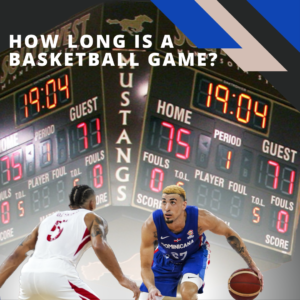What is a Field Goal in Basketball? Here’s Your Answer

Some casual sports fans may ask, “What is a field goal in basketball?” not being familiar with the terminology surrounding the sport. All basketball games, including recreational, organized, and professional, contain field goals. The following article will provide a detailed summary explaining what field goals are and the types of field goals that typically occur in a basketball game.
What is the definition of a field goal?
A field goal can be defined as any legal shot attempted and/or made by a basketball player in a game during live action. Field goals can be attempted from any area of the court as long as the player attempts the shot while inbounds. The purpose of basketball is to make as many field goals as possible while preventing the opposing team from doing the same.
Why is it called a field goal?
The origin of the term field goal can be traced back to Dr. James Naismith’s original 13 rules of basketball. In these rules, Naismith frequently refers to successful shot attempts and the basket itself as goals. Probably because a soccer ball was originally used as the regulation ball in the early days of basketball.
Naismith also refers to the basketball court as the field of play, a common designation for the other playing environments for popular sports of the day including soccer and baseball. Therefore, because shots are directed at a goal while attempted from the field according to Naismith, all types of shots made during play are now referred to as field goals.
Related Articles:
What is a field goal attempt in basketball?
A field goal attempt specifically refers to any legal shot attempted by a basketball player in a game during live action, whether or not the shot is successful. There are several types of field goal attempts that a player can perform during a game, all of which require different skill sets from the player. The position of a player will often dictate the frequency of the specific types of field goals that they will attempt.
Is a layup a field goal?
Although the layup is one of the simplest shots attempted in a basketball game, it is still considered a field goal attempt. A layup involves a player scoring from right under the basket. The player will dribble to the basket, jump off one leg, and shoot the ball into the basket. Most layups involve the player banking the ball into the basket by way of the square located on the backboard.
Is a dunk a field goal?
While the dunk is the only shot where a player comes into direct contact with the rim, it is also still considered a field goal attempt. Dunking involves a player jumping into the air holding the ball in their hands with their arms extended toward the basket. The player will then quickly throw the ball through the hoop while their hands are above the rim, with their hands then following through and hitting or grabbing the rim.
Hook Shot
A hook shot is a field goal, usually attempted by a center, where the player will jump into the air close to the basket and extend the ball in one of their hands high into the air away from the defender. The player will then flick or lob the ball into the basket from the extended position. The advantage of this type of shot is that it is virtually impossible to block when properly executed.
Jump Shot
A jump shot is any field goal attempt where the offensive player leaves their feet while taking the shot. In the early days of basketball, the term jump shot was coined to distinguish these types of shots from set shots, which were field goal attempts where the play would set their feet in a fixed position and then shoot the ball without leaving the floor.
Set shots have now become obsolete, leaving jump shots as the exclusive method of shooting. In modern basketball terminology, jump shots usually refer to longer shot attempts at the basket, distinguishing them from other shorter shots such as layups, dunks, hook shots, floaters, and runners.
Floater
A floater is a field goal attempt where a player will drive to the basket and toss up a shot with a high arc into the air. The player will momentarily come to a stop for a split second before attempting the shot. It is typically used if a help defender gets in the path of the driving offensive player, preventing them from getting to the basket. A floater is also useful when trying to score over taller defenders, who may otherwise block the shot if a normal jump shot or layup is attempted.
Runner
A runner is a field goal attempt where the offensive player will drive to the basketball and shoot a jump shot, leaving the floor on one foot. The player does not stop momentarily, as with a floater, but keeps one continuous motion throughout the shot attempt. The field goal attempt does not have the high arc of a floater but instead resembles a regular jump shot.
How many points is a field goal worth in basketball?
All field goals in basketball are worth either two points or three points, depending on where the ball is shot from. Any shot from behind the 3-point line is worth 3 points. Any shot on or in front of the 3-point line is worth 2 points.
It is important to note that as long as a player’s feet remain behind the 3-point line when they attempt a shot, the field goal is worth 3 points even if their feet land on or past the 3-point line after the shot is released.
Is a free throw a field goal?
Because a field goal is defined as a shot that occurs during live action, a free throw is not a field goal attempt, since it occurs during a stoppage in play. Free throws are awarded to a player in certain foul situations and are worth one point. All free throw attempts are unguarded shots from the foul line.
What is field goal percentage?
Field goal percentage is simply the percentage of shots made out of a certain number of attempts, from either 2-point range, 3-point range, or both. Calculating FG% in basketball simply involves dividing the number of shots made by a person or team and dividing them by the number of shots attempted. For example, if a player attempts 12 field goals in a game and makes 8, their field goal percentage would be 66.7%, dividing 8 by 12.
What is a good field goal percentage in basketball?
The criteria for a good field goal percentage will vary based on a variety of factors, including the level of play, era, and position. For the 2021-2022 NBA season, all teams shot a combined 46.1% from the field, 35.4% from 3-point range, and 77.5% from the free throw line.
A good shooting percentage for most centers and big men in the NBA would be close to 55% or a little higher. Most elite offensive guards in the NBA shoot at least in the 45-46% range overall.
Elite offensive forwards generally shoot around 50% overall from the field. Most elite outside shooting players in the NBA shoot around 40-42% from 3-point range, with a few every year approaching the 43-44% range. Lower levels of play such as high school and college have lower expectations for FG%.
True Shooting Percentage
True shooting percentage is an advanced statistic that measures a player’s overall efficiency at shooting a basketball. It is specifically designed to provide a more accurate summary of a player’s shooting ability than FG%, 3PT%, or FT% on their own. Below is the equation for formulating true shooting percentage:
PTS/2(FGA + (.44 X FTA))
Shot attempts during a game’s live action
A field goal attempt is any type of shot attempt made by a player during the game, other than free throws. They are separated into 2-point shots and 3-point shots. Field goals comprise several different categories of shots including layups, dunks, hook shots, jump shots, floaters, and runners.
While some casual and beginner sports fans may ask, “What is a field goal in basketball?”, all basketball fans reading this article now know that field goals are shot attempts during a basketball game’s live action.









